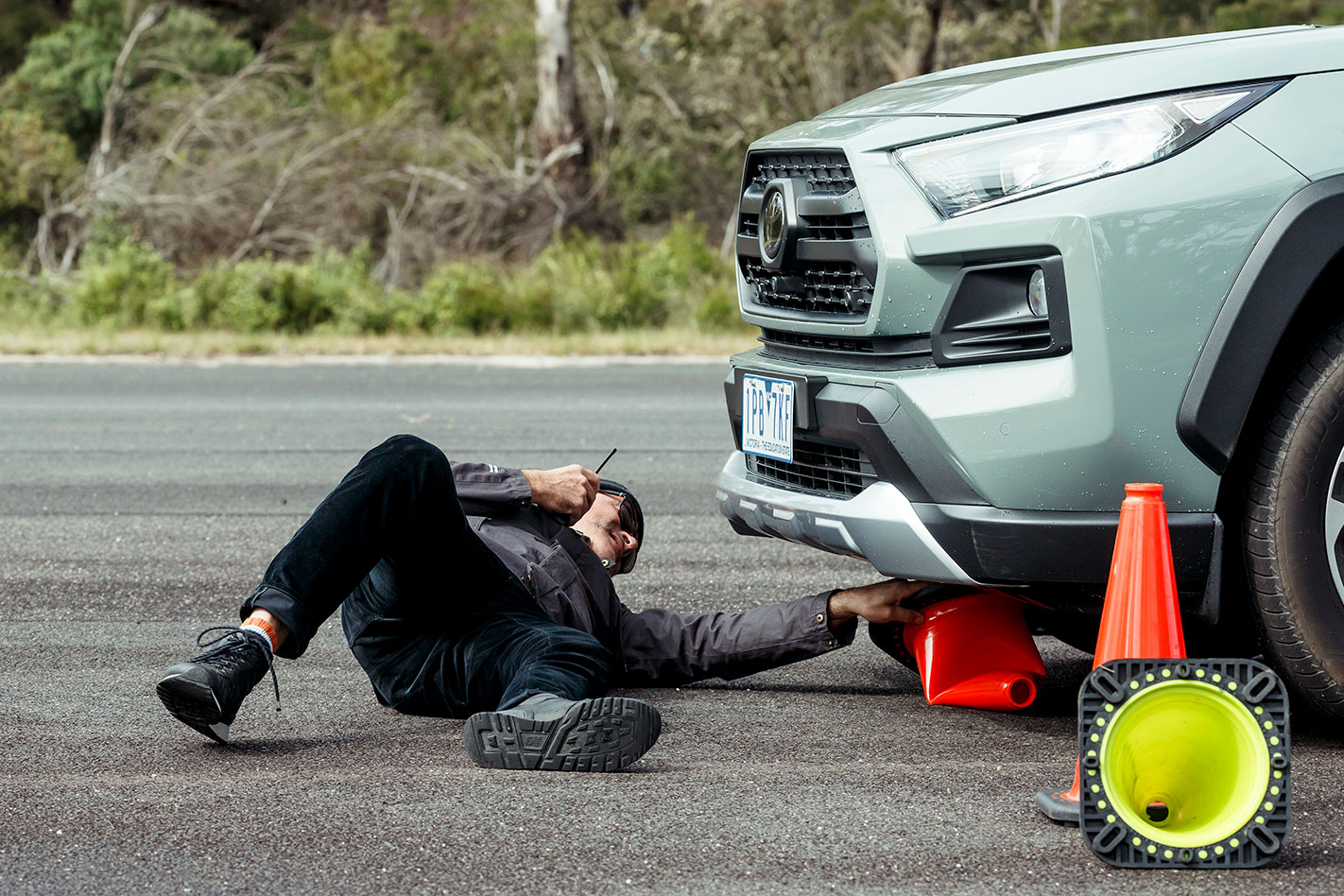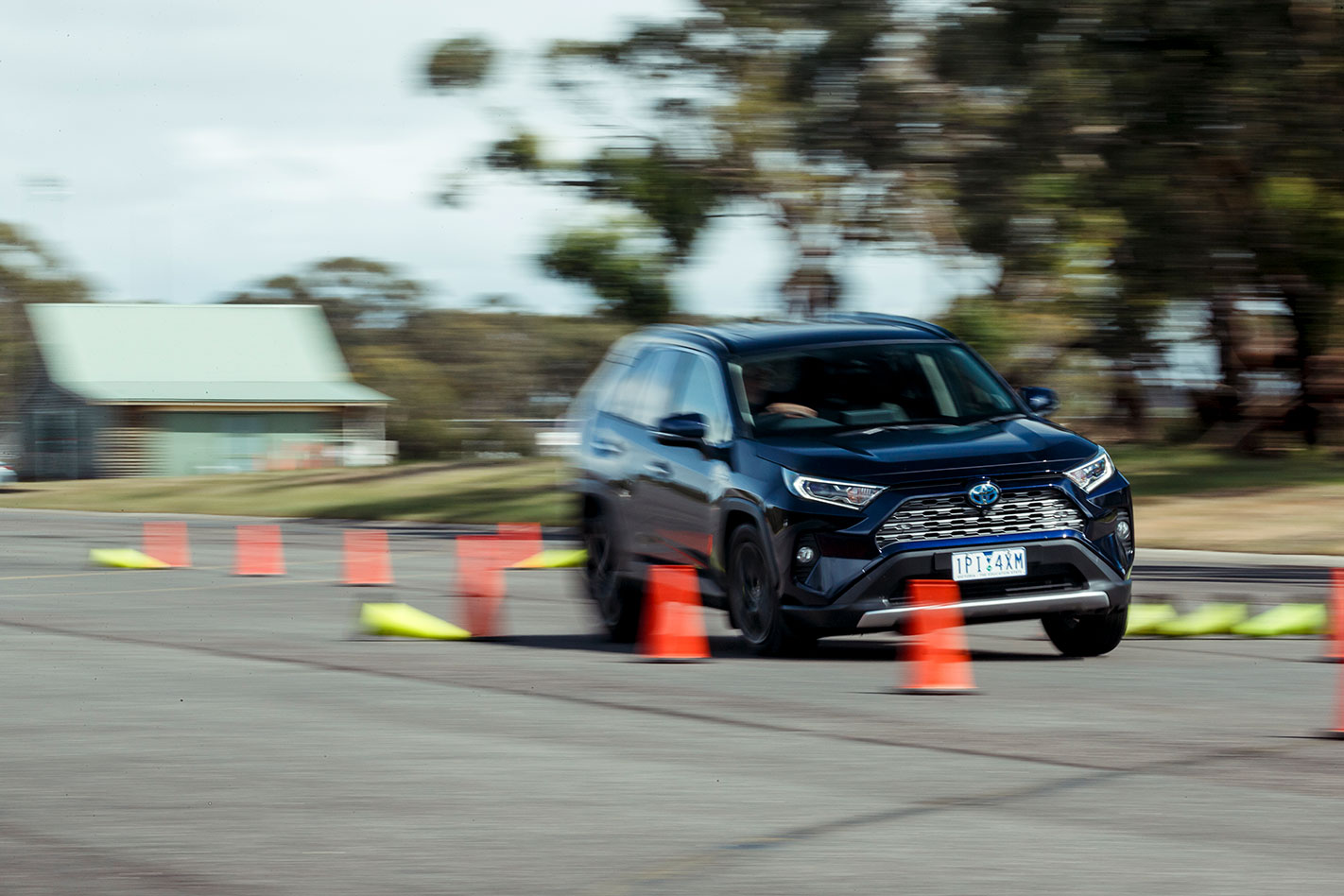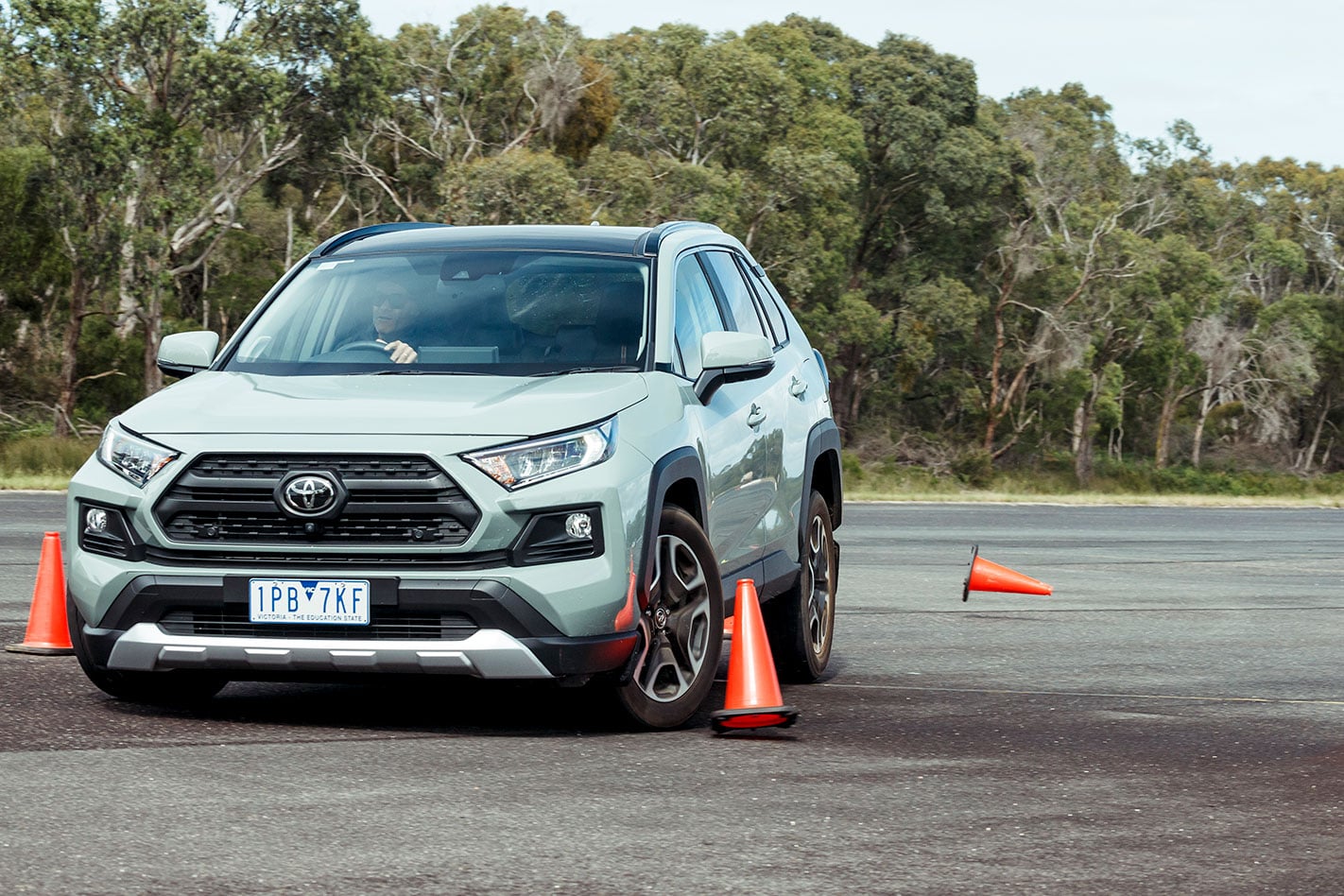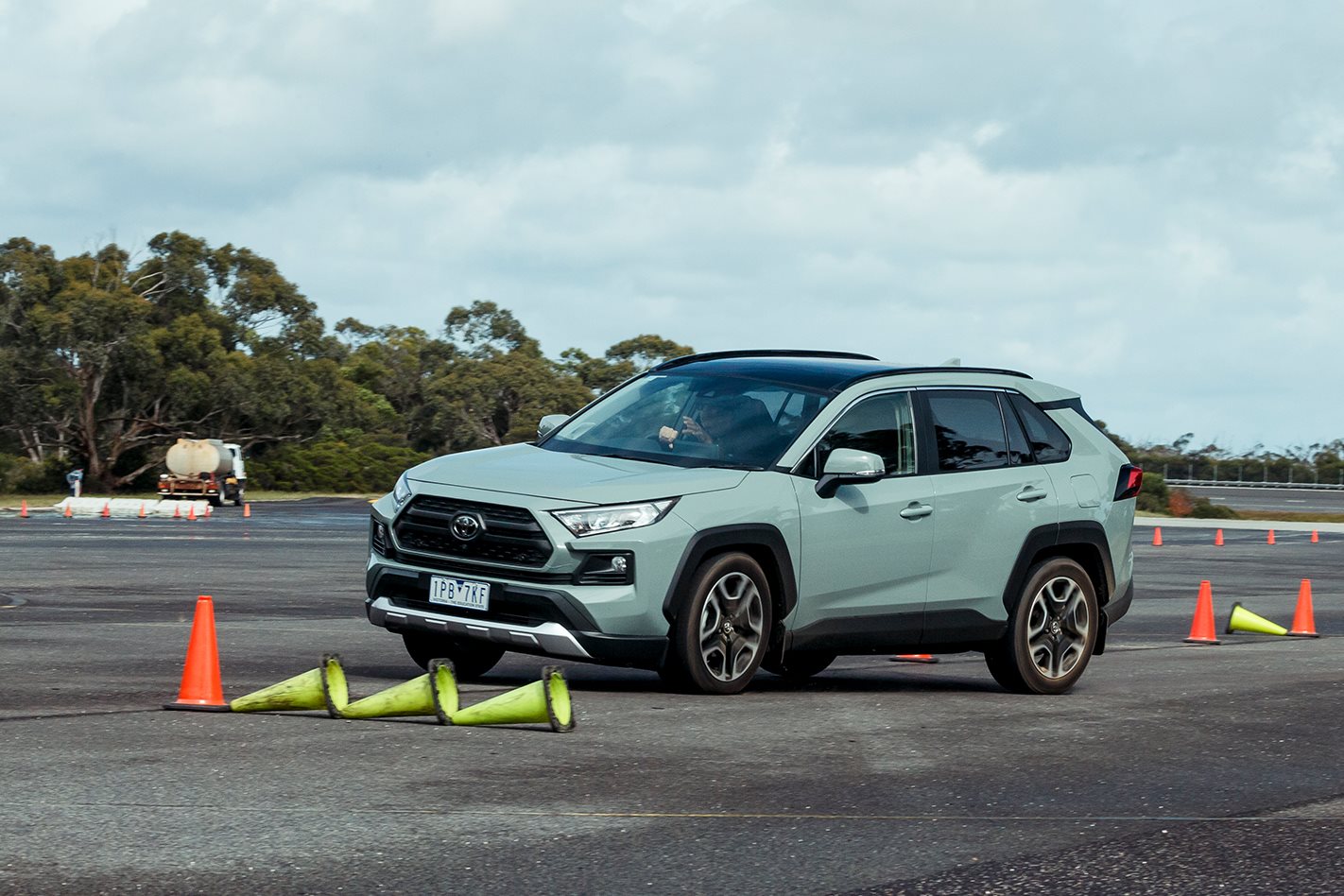The latest Toyota RAV4 may well have gained rave reviews from many testers worldwide, but it hasn’t earned a tick of approval from Teknikens Värld (World of Technology) a respected Swedish title that broke the original story on how the Mercedes-Benz A-Class failed the moose test.
Like the baby Benz, the Toyota SUV’s behaviour through their moose test, a rapid emergency lane change simulation, has generated cause for concern. While the RAV4 remained resolutely dirty side down (unlike the A-Class), its behaviour through the offset maze of cones had vehicle tester Linus Projtz criticising its dynamics.

“The fifth generation of Toyota RAV4 performs really bad,” claimed Projtz. “We find an ESP (stability control) system doesn’t limit the car’s movement, there’s a bouncing effect through the test which makes the car really hard to handle and that’s at a speed of about 67, 68km/h,” he said. “Back to the drawing board.”
Wheels tested the RAV4 through a lane change manoeuvre at our latest Car of the Year exercise, tester Byron Mathioudakis criticising the stability control calibration as being “heavy handed”. My notes refer to it as “grabby”. We conducted the exercise at Holden’s Lang Lang facility and GM Holden had recently imposed restrictions on extreme manoeuvres with high-sided vehicles, so we were unable to replicate the speeds at which Teknikens Värld were entering the slalom.

In addition, the Teknikens Värld test dictates that the vehicle is at its maximum permissible weight, with ballast in the boot and five adults on board. In effect, it’s a worst-case scenario, the driver flicking the steering as violently as possible.
Despite the stability control’s zealous interventions, the RAV4 negotiated the lane-change in a way that didn’t diverge radically from what we would expect a softly-sprung SUV to do. In fact, many buyers are attracted to the latest RAV4 exactly because of its benign ride, accepting a trade-off in handling sharpness. We also noted that the RAV4 exhibited significantly less rear-end yaw through the cones than some notably sportier cars on test.

In a worst case scenario, according to the strict test criteria of Teknikens Värld, the RAV4 came up short. That said, we’d expect a firmly sprung sports car with short-stroke suspension to come unstuck when driven at speed over the sort of extreme bumps a RAV4 would easily take in its stride. Nevertheless we agree with the Teknikens Värld team that perhaps Toyota needs to polish its stability control calibration for the latest RAV4. Does that make it a dangerous car in the real world? No. Could it be made better? Certainly.
We contacted Toyota Australia for a comment on the test and they furnished us with the following statement.
“At Toyota, the safety of our customers is our number one priority, and to ensure their security, we apply strict safety tests during the development of all our products. Our internal tests fully meet the global standards for obstacle avoidance, and since 2016, we have updated our processes to also reflect the procedures used by Teknikens Värld. During its development stage, RAV4 successfully passed all internal tests, including the Teknikens Värld elk test.
“After this report we recently re-ran the Teknikens Värld elk test with a similar specification vehicle and achieved the same positive results as before. We are now in contact with Teknikens Värld to further understand the different test results. We give our assurance to all Toyota customers that they can be confident in the safety of their vehicles.”
Watch the video, draw your own conclusion on the RAV4’s behaviour and let us know what you think.






